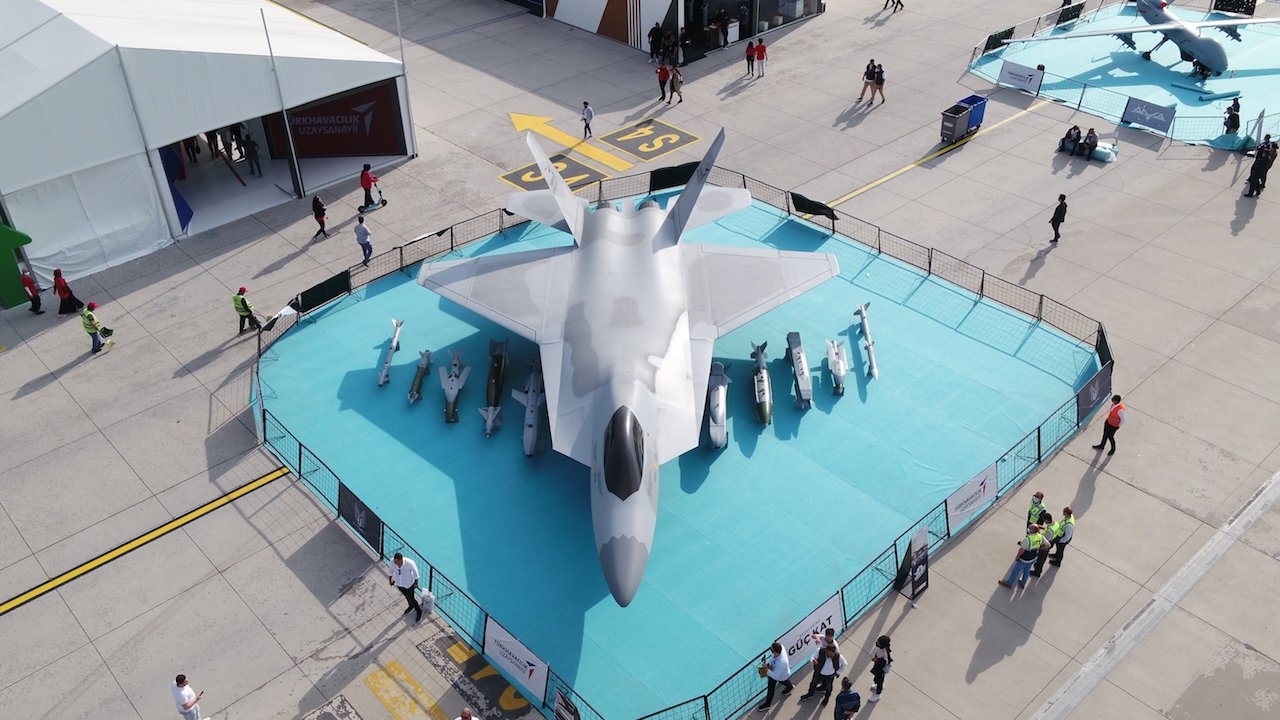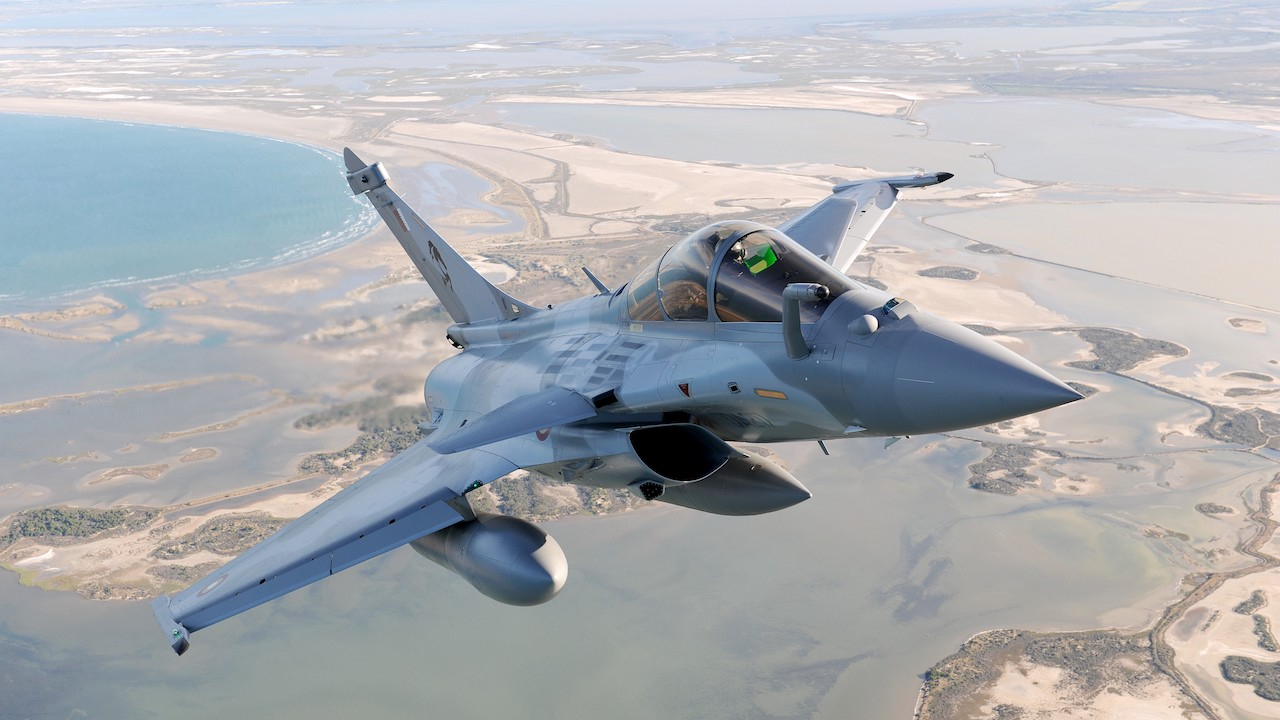Turkey powers on with ambitious schedule for new stealth fighter
Turkish Aerospace is working to an ambitious timetable on its national combat aircraft – the Milli Muharip Uçak (MMU) programme.

Good-looking: The mock-up of TAI’s new MMU fifth-generation fighter showing off its lines, which demonstrate the obvious influence of the US F-22 and F-35. Picture: TAI.
The MMU is an indigenous fifth-generation stealthy tactical fighter aircraft that is being developed to meet a Turkish Air Force requirement by prime contractor TUSAŞ/Turkish Aerospace, with technological assistance from BAE Systems.
Some 250 MMU aircraft are to be delivered between 2029-2040.
Turkish Aerospace general manager, Temel Kotil, said that the first MMU prototype will “leave the hangar on March 18, 2023 with engines running”.
This is the same date that has been set for the first flight of the TAI Hürjet jet trainer and of the TAI T929 ATAK 2 combat helicopter.
Next year marks the centenary of Turkish independence, and of the foundation of the Republic of Turkey as a modern and secular nation state. March 18 is of particular significance as it will be the 108th anniversary of what Turkey remembers as the famous naval victory of Çanakkale – what the west knows as the Gallipoli campaign – the prelude to the Turkish war of independence.
With the MMU preliminary design review yet to be completed, and with the aircraft’s shape, sensors and sub-systems still not finalised, it is hard to see how a prototype could be completed in time, let alone one capable of taxiing under its own power, though the planned first flight date of late 2026 would seem to be more achievable.
Three block 0 development aircraft, including the first prototype, and 10 block one (low rate initial production (LRIP) and serial production aircraft will each be powered by a pair of General Electric F110-GE-129E turbofans, 10 of which were ordered from the US company in 2019 and 2021.
Turkey intends to eventually use a domestically produced powerplant for the MMU, and Tusaş Engine Industries (TUSAŞ Motor Sanayii AŞ, TEI) and TRMotor are competing to supply an engine, together with the Kale Group’s Turkish Air Engine Company (TAEC) joint venture with Rolls-Royce.
TEI was founded in 1985 as a joint venture involving GE Aviation, Turkish Aerospace Industries, the Turkish Armed Forces Foundation and the Turkish Aeronautical Association, while TR Motor is a subsidiary of the procurement agency SSB, founded in 2017, and wholly owned by TUSAŞ.
Kale is less well known, but has significant production experience with Pratt & Whitney engines, manufacturing engine shrouds, heat shields, flaps, seals, and bracket cone assemblies for the F135 engine – powerplant for the fifth-generation Lockheed Martin F-35 Lightning II Joint Strike Fighter aircraft, as well as parts for the F100 engine family, which powers the F-15 and F-16 fighters.
Turkey’s favoured option seems to be for a new engine to be produced by TAEC and Rolls-Royce, who have received a request for proposals for such a programme.
Ismail Demir, Turkey’s president of Defense Industries – a civil institution established by the government to manage the country’s defence industry – and Turkish Air Force commander, General Hasan Küçükakyüz, led two senior delegations to the UK in May for talks with Rolls-Royce. Demir described the UK Government’s reaction to the plan to cooperate on an engine for the MMU as being “generally positive”.
Rolls-Royce originally offered a joint production partnership in October 2016, with a production facility in Turkey to manufacture engines for the MMU (then still known as the TF-X), before the agreement collapsed as a result of disagreements about intellectual property and export restrictions.
“It is imperative for us that the engine will be produced in Turkey… and that Turkey should possess intellectual property rights,” Demir said. “We had some issues with Rolls-Royce before. These have been resolved. I think we are ready to work together.”
It is not clear as to how many competitors will go through to the second phase of the indigenous engine project – a development study that will culminate in the production of a working prototype of the engine.
The third phase of the project will see the selection of a main contractor to serially produce the MMU’s indigenous engine, beginning from around 2028 onwards.
Whatever engine is eventually selected to power full series production MMU aircraft, it will need to offer a compelling blend of performance, low signature and reliability, since the MMU aircraft is expected to be a super-cruising, low-observable fighter that is also available, maintainable and cost-effective.
Stay up to date
Subscribe to the free Times Aerospace newsletter and receive the latest content every week. We'll never share your email address.


